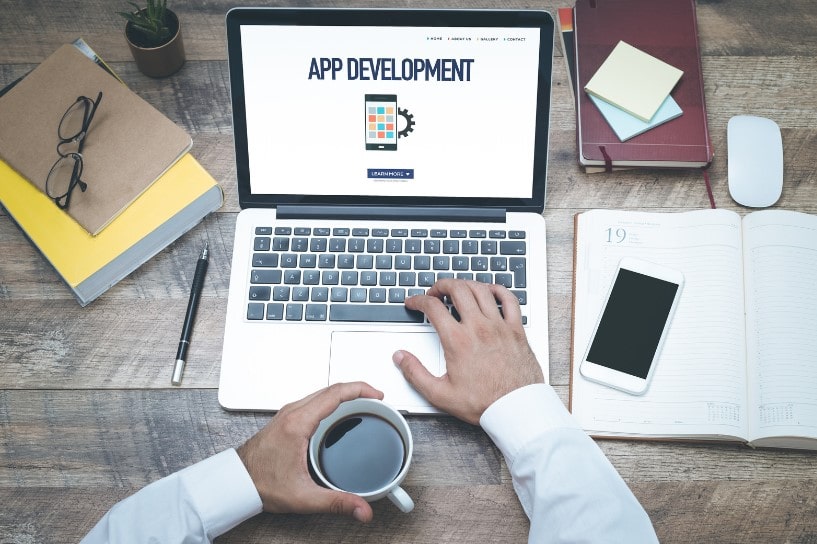The Key Steps To Developing An App For Your High End Retail Company
Mobile technology has revolutionised the way that people shop, and if you're a high-end retail or luxury clothing brand, a well-developed app can drive substantial business growth and help build brand loyalty by strengthening customer engagement, loyalty and, ultimately, sales.
Investing in a mobile app is one of the best things you can do to increase brand awareness among your target buyer groups and may also help develop overall revenues by increasing impulse sales while users are on their phones or tablets.
In this article, we'll explore the key steps to developing a winning app for your high-end retail company.
Strategy
Before you begin developing your app, it’s important to create a bespoke strategy that defines its purpose, audience, competition, project goals, and objectives. You’ll need to identify what you want to achieve with your app. This could be increasing customer engagement through social shares and reviews, boosting online sales, improving customer loyalty, providing 24/7 access to your products, or even directing more foot fall to your physical high street shops. Knowing your end goal will help you make informed choices about the features and user experience you will offer.
Understand Your Customer
It’s important to understand your ideal target customer profiles and develop a user experience that meets their needs genuinely and intimately. There are many ways you can do this. Conducting traditional focus groups and interviews with loyal customers can help you gain insight into your core customer's wants and needs, you can also experiment with online email surveys, post purchase feedback requests, and even solicit feedback through an online chat bot on your website. This data should be your primary focus and anchor throughout the entire app development process, from initial concept to testing and rollout.
Analysis And Planning
For your project to be cost-effective, you will need to identify the resources, costs and requirements needed to create your app within your timescale and budget. You make a plan, create milestones and set ambitious but achievable deadlines to ensure your app is delivered according to customer and stakeholder expectations. This process usually involves creating a detailed project plan that is regularly reviewed and updated to ensure the project stays on track, and many businesses benefit from appointing a dedicated mobile app development partner with established project management experience to avoid issues and hold-ups.
Design
The design of your app is crucial and should align with your brand colours, images, fonts, and general aesthetic. The layout, menu, and any tools and e-commerce options must be stylistically pleasing, secure, intuitive, and – most importantly – easy to navigate. It's also critical to keep user experience (UX) and user interface (UI) at the forefront of your mind throughout the design process, at each stage considering what your target buyers consider most important from their user experience.
The goal is to cultivate a seamless and effortless experience for the user, so they can use the app straightaway without having to read the equivalent of a hefty user manual to access its tools and features.
Be careful not to over develop your app. A high-quality app with a few well-chosen features will be more accessible and less intimidating to users than one with a huge toolkit of features they may not be interested in. You can always upgrade your app to add additional functionality based on customer feedback in the future.
App Development
The app development stage is where you bring your design to life, testing various strategies and layouts to find the ideal solution for your brand and its customers. This process includes defining the technical architecture, followed by coding and integrating the app's features. At this stage, you need to decide whether you want a native or web app, and determine the type of app you're trying to create.
Application Testing
Before you release your app to the public, we recommend thorough and extensive testing to ensure that everything is functioning properly. Money invested in pre-release testing is well spent if it avoids embarrassing faux pas post launch, or performance issues that could negatively impact your brand identity.
Testing will help identify bugs and improve the user experience, ensuring that your app is stable, usable, and secure. Some brands choose to make an early version of their app available to beta testers to ensure that the app meets your customer's needs. If you are doing so, make sure that your app is clearly marked as a beta version on the mobile app marketplaces to avoid customer disappointment – people generally have lower expectations for a beta development than a full release, which means they are less likely to be disappointed by glitches and more likely to be impressed by success! Be sure to listen to suggestions during the beta stage and incorporate key feedback into future updates.
High End Retail App Development From Glance
At Glance, we develop bespoke luxury clothing apps for premium retailers, facilitating higher customer engagement and greater revenues through mobile sales. To find out more about what our high-end app development service could do for you, please call 020 3970 4775 today, or click here to send us a message.
Source: Canva
Share this
Subscribe To Our Blog
You May Also Like
These Related Stories

Retina Display: Joys and Woes

The Benefits Of Luxury App Design For High-End Companies






